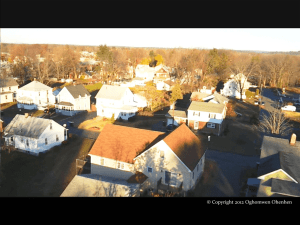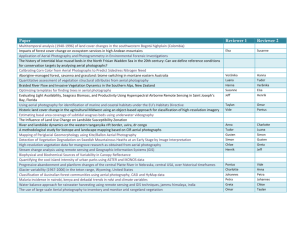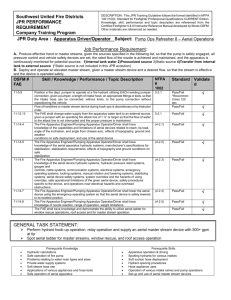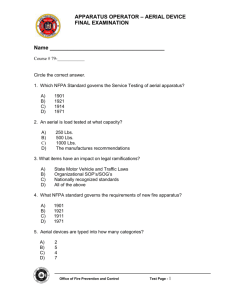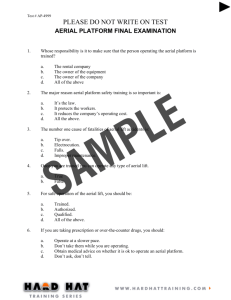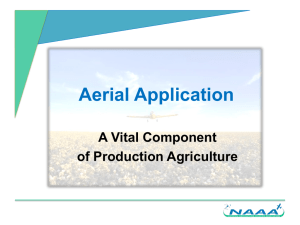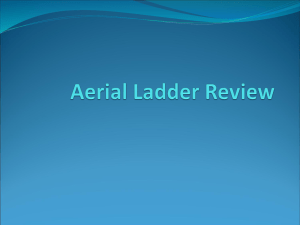Notes
advertisement
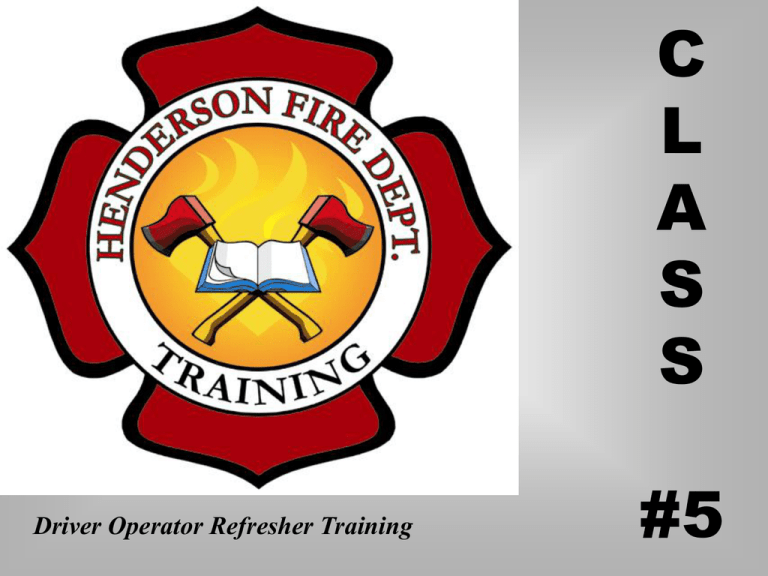
C L A S S Driver Operator Refresher Training #5 Operating Emergency Vehicles Class #5 Henderson Fire Department Certified Driver Operator Refresher Training Course Goals • To provide refresher training to all certified drivers of the Henderson Fire Department. • Each driver / operator must be able to successfully perform the skills listed in the course objectives. Course Objectives NFPA 1002 ,Standard on Fire Apparatus Driver/Operator Professional Qualifications 2009 Edition • 6.2.1* Maneuver and position an aerial apparatus(Skyboom) Course Objectives • 6.2.2* Stabilize an aerial apparatus • 6.2.3* Maneuver and position the aerial device from each control station • 6.2.4* Lower an aerial device using the emergency operating system (Skyboom will be used for completing these objectives) “ It can be argued that the fire ground placement of aerial apparatus is the most critical of all types of apparatus.” Standard Operating Procedures for Positioning • Level 1 Staging – 1st Engine, Truck and Rescue report to Incident - Truck will take the front of the structure • Working Structure Fire – Offensive - (Possible Vertical Vent) – Defensive - Biggest impact on fire (between fire and exposures) Tactical Considerations • • • • Rescue Access to Upper Levels Ventilation Fire Suppression (Elevated Master Streams) Rescue • Uphill and Upwind • Spot at the corner if possible • If using a platform - How will they enter the platform? • Elevate, Rotate, Extend, LOWER ! Access to Upper Levels • Performing truck work on upper levels • Secondary water supply to upper levels • As means of escape or egress should conditions worsen • Used to deploy portable equipment Ventilation • • • • Pitched roof Vs flat roof Operating from aerial device Unburned side (Safety of vent group) Sky-booms extend ladder above roof line • Platforms at roof level • Uphill and upwind Fire Suppression (Elevated Master Streams) • Blitz attacks • Defensive attacks • Exposure protection Spotting Considerations • Surface Conditions • Weather Conditions • Electrical Hazards or Overhead Obstructions • Angle and Location of aerial device • Fire Building Conditions Surface Conditions • Soft surfaces • Surface condition may change due to incident • Paved-surfaces • Vaults - Underground parking Weather Conditions • Cold • Hot • Windy Electrical Hazards or Overhead Obstructions • • • • • Electrical lines Cable TV Telephone Trees Overhangs / Parking covers Angle and Location of Aerial Device • Spotting will also be determined by stabilizing • Stability can be improved by deploying the aerial device directly off the front or back • Spotting on an incline Fire Building Conditions • • • • • Extent of Fire Radiant Heat Effective reach (elevated streams) Collapse zones Egress Stabilizing • Certified Driver Operators must be familiar with aerial apparatus (Skyboom) operated by HFD. Stabilizing • Certified Driver Operator are to review the following procedures: – Basics of aerial hydraulic systems – Transferring power to hydraulic system – Setting stabilizers – Operating valves and understanding sequence of events – Stabilizing on even and uneven terrain – Locking stabilizers and transferring power to aerial device Operating Aerial Device • All Certified Driver Operators must understand the proper procedures for operating the aerial device. – From pedestal – From Bucket – Remote – Auxiliary / Emergency Operations Emergency Operations • Auxiliary pump operation may be required – Each manufacture will have specific information on this operation – Remember this pump is to be operated at one minute intervals with one minute of rest to prevent overheating. Summary • 6.2.1* Maneuver and position an aerial apparatus • 6.2.2* Stabilize an aerial apparatus • 6.2.3* Maneuver and position the aerial device from each control station • 6.2.4* Lower an aerial device using the emergency operating system
